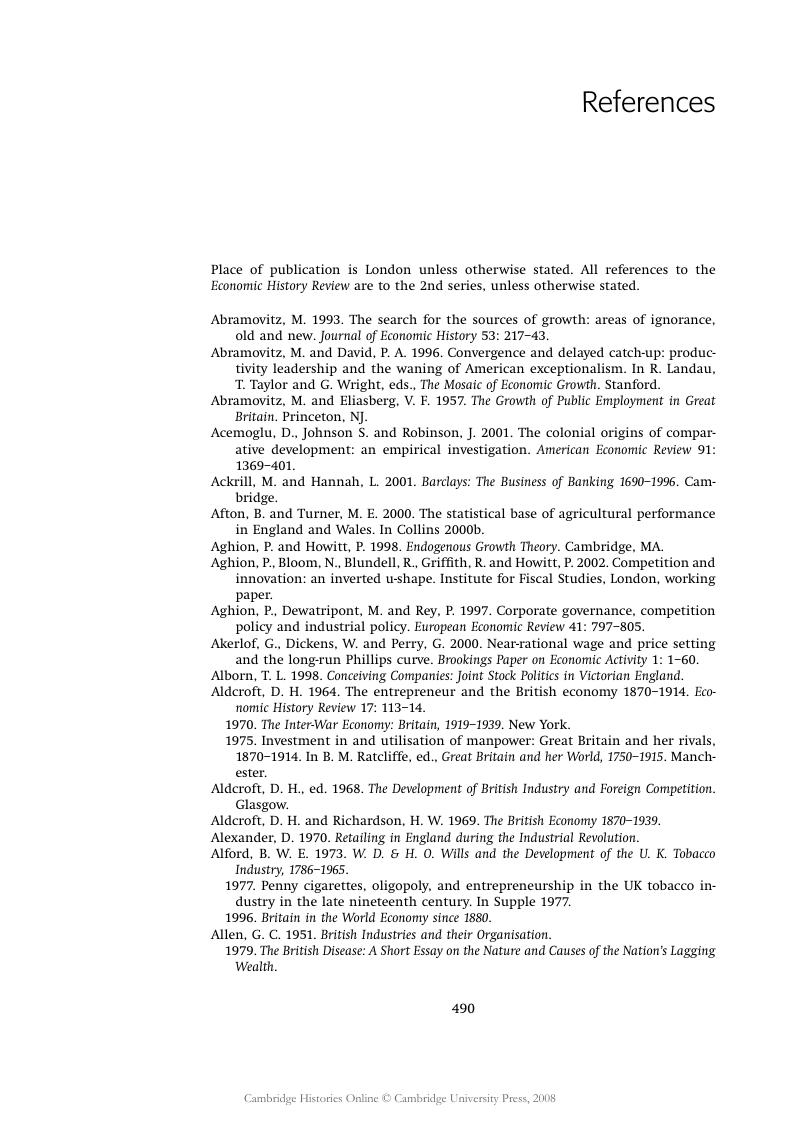Book contents
- Frontmatter
- 1 Long-run growth
- 2 Population and regional development
- 3 Human capital and skills
- 4 Manufacturing and technological change
- 5 The service sector
- 6 Agriculture, 1860–1914
- 7 Trade, 1870–1939: from globalisation to fragmentation
- 8 Foreign investment, accumulation and Empire, 1860–1914
- 9 Enterprise and management
- 10 Domestic finance, 1860–1914
- 11 Living standards, 1860–1939
- 12 The British economy between the wars
- 13 Unemployment and the labour market, 1870–1939
- 14 British industry in the interwar years
- 15 Industrial and commercial finance in the interwar years
- 16 Scotland, 1860–1939: growth and poverty
- 17 Government and the economy, 1860–1939
- References
- Index
- References
References
Published online by Cambridge University Press: 28 March 2008
- Frontmatter
- 1 Long-run growth
- 2 Population and regional development
- 3 Human capital and skills
- 4 Manufacturing and technological change
- 5 The service sector
- 6 Agriculture, 1860–1914
- 7 Trade, 1870–1939: from globalisation to fragmentation
- 8 Foreign investment, accumulation and Empire, 1860–1914
- 9 Enterprise and management
- 10 Domestic finance, 1860–1914
- 11 Living standards, 1860–1939
- 12 The British economy between the wars
- 13 Unemployment and the labour market, 1870–1939
- 14 British industry in the interwar years
- 15 Industrial and commercial finance in the interwar years
- 16 Scotland, 1860–1939: growth and poverty
- 17 Government and the economy, 1860–1939
- References
- Index
- References
Summary

- Type
- Chapter
- Information
- The Cambridge Economic History of Modern Britain , pp. 490 - 526Publisher: Cambridge University PressPrint publication year: 2004



